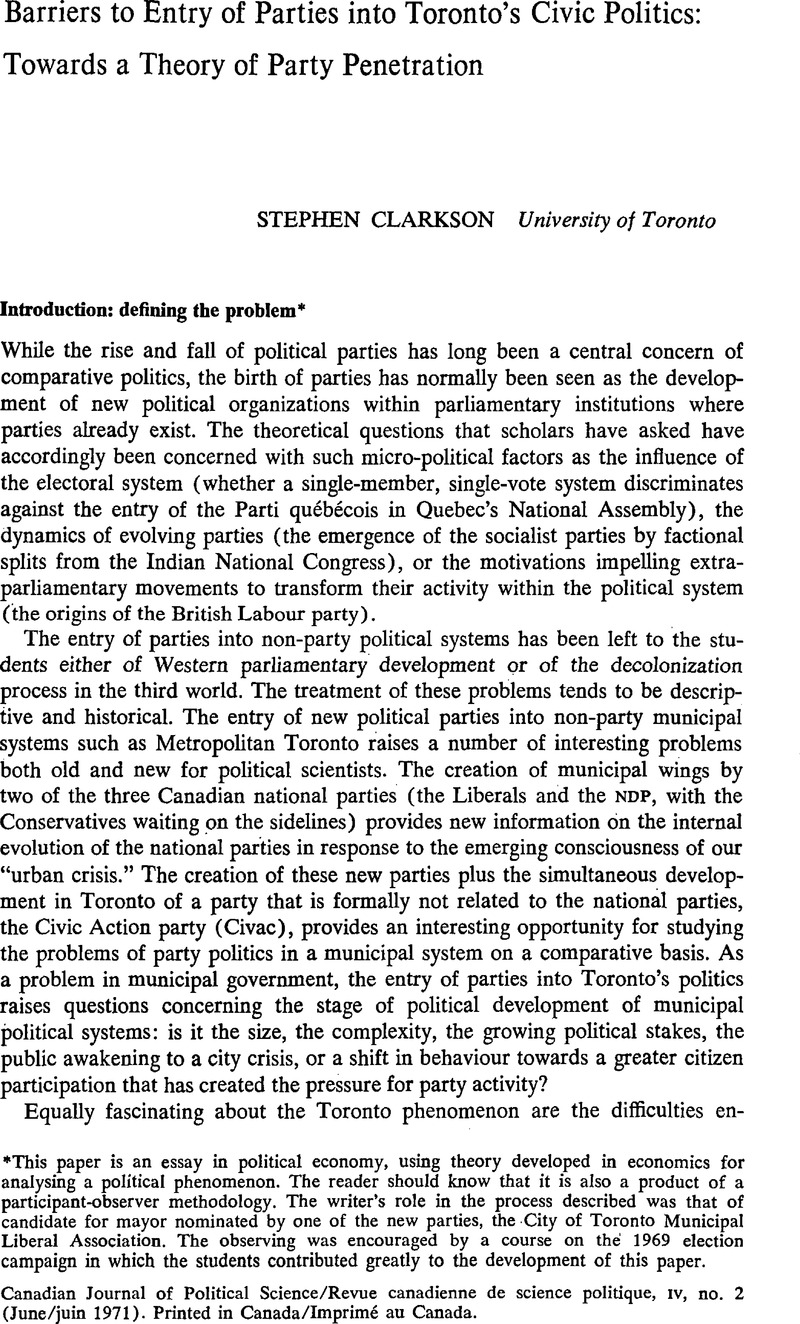Published online by Cambridge University Press: 10 November 2009

1 Municipal politicians have long had personal ties with the national parties, but have till now felt it expedient to conceal these relations in order to appeal to as broad a cross section as possible of the few voters who take part in municipal elections.
2 The tax rolls are drawn up between January and September; according to the deputy city clerk, these rolls change by 40 per cent each year. Thus the electoral list drawn up in October is on the average six months out of date or in error by about 20 per cent, or ninety thousand voters. This error was confirmed by Professor Hough, Jerry F. in his careful investigation of three wards: “The Liberal Party and the 1969 Toronto Mayoralty Election,” paper presented to the Canadian Political Science Association annual meeting, June 4, 1970, mimeo.Google Scholar